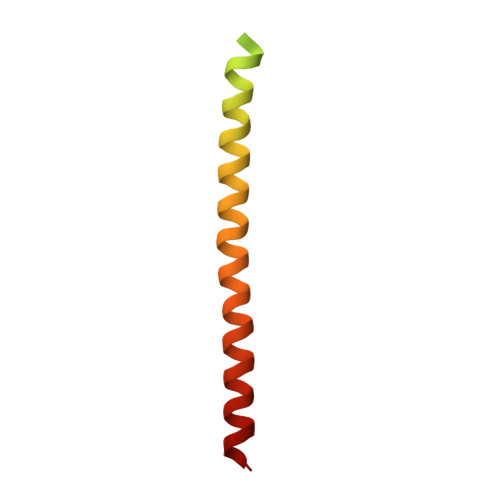Atomic structure of the vimentin central alpha-helical domain and its implications for intermediate filament assembly.
Chernyatina, A.A., Nicolet, S., Aebi, U., Herrmann, H., Strelkov, S.V.(2012) Proc Natl Acad Sci U S A 109: 13620-13625
- PubMed: 22869704
- DOI: https://doi.org/10.1073/pnas.1206836109
- Primary Citation of Related Structures:
3S4R, 3SSU, 3SWK - PubMed Abstract:
Together with actin filaments and microtubules, intermediate filaments (IFs) are the basic cytoskeletal components of metazoan cells. Over 80 human diseases have been linked to mutations in various IF proteins to date. However, the filament structure is far from being resolved at the atomic level, which hampers rational understanding of IF pathologies. The elementary building block of all IF proteins is a dimer consisting of an α-helical coiled-coil (CC) "rod" domain flanked by the flexible head and tail domains. Here we present three crystal structures of overlapping human vimentin fragments that comprise the first half of its rod domain. Given the previously solved fragments, a nearly complete atomic structure of the vimentin rod has become available. It consists of three α-helical segments (coils 1A, 1B, and 2) interconnected by linkers (L1 and L12). Most of the CC structure has a left-handed twist with heptad repeats, but both coil 1B and coil 2 also exhibit untwisted, parallel stretches with hendecad repeats. In the crystal structure, linker L1 was found to be α-helical without being involved in the CC formation. The available data allow us to construct an atomic model of the antiparallel tetramer representing the second level of vimentin assembly. Although the presence of the nonhelical head domains is essential for proper tetramer stabilization, the precise alignment of the dimers forming the tetramer appears to depend on the complementarity of their surface charge distribution patterns, while the structural plasticity of linker L1 and coil 1A plays a role in the subsequent IF assembly process.
- Laboratory for Biocrystallography, Department of Pharmaceutical and Pharmacological Sciences, Katholieke Universiteit Leuven, Leuven, Belgium.
Organizational Affiliation:
















